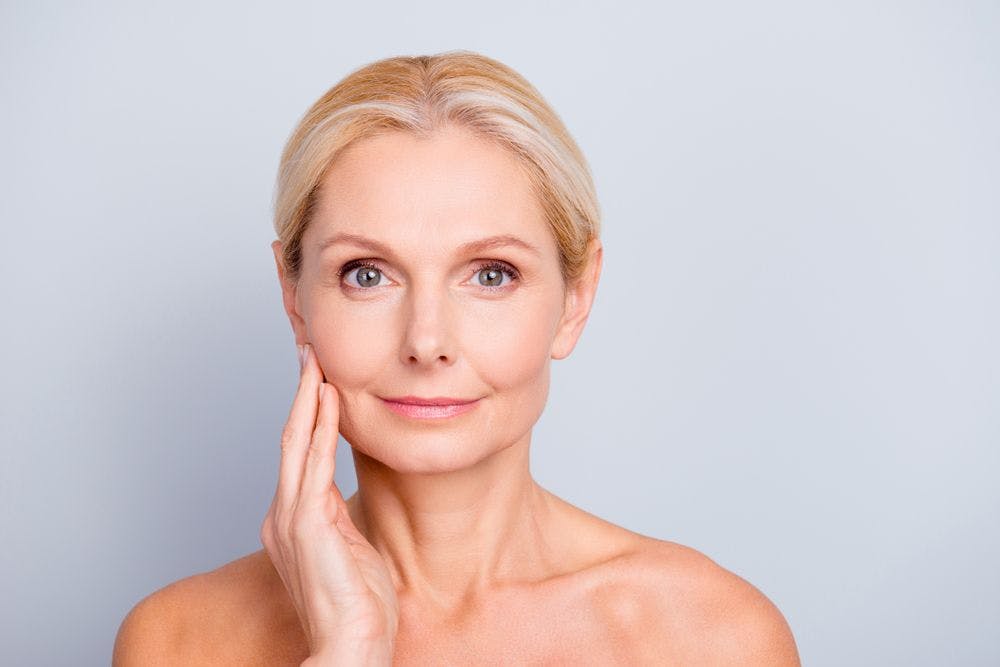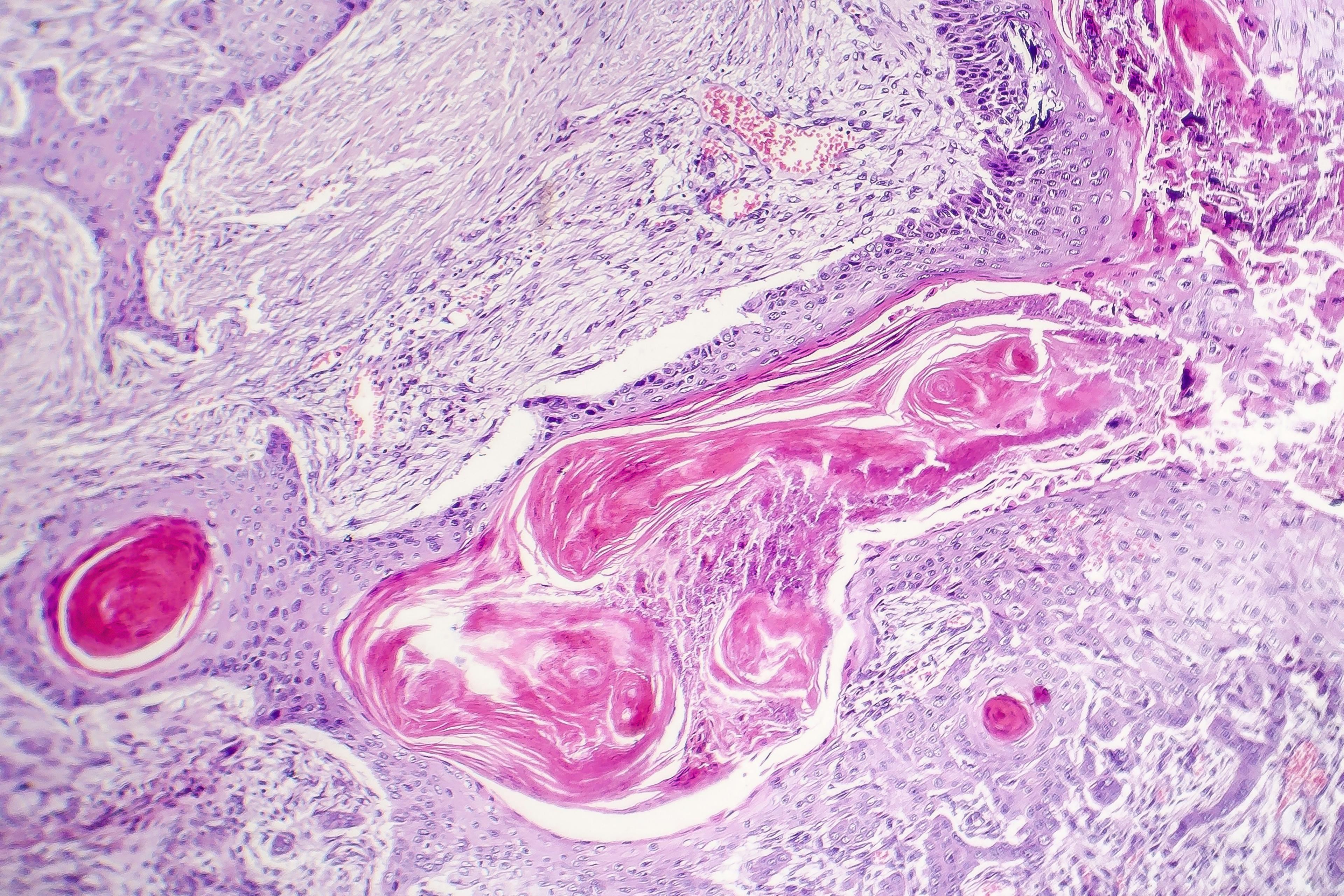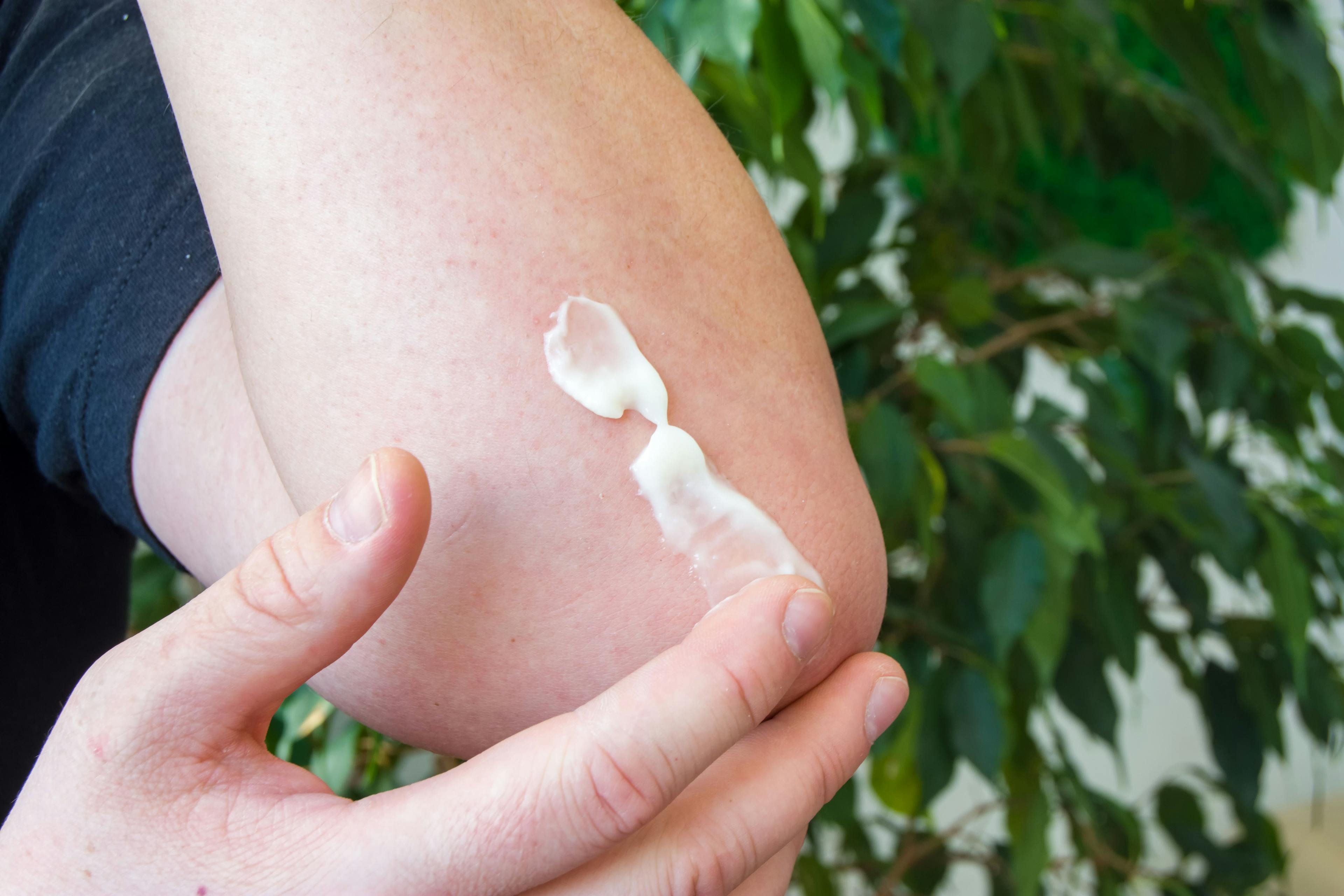- Acne
- Actinic Keratosis
- Aesthetics
- Alopecia
- Atopic Dermatitis
- Buy-and-Bill
- COVID-19
- Case-Based Roundtable
- Chronic Hand Eczema
- Chronic Spontaneous Urticaria
- Drug Watch
- Eczema
- General Dermatology
- Hidradenitis Suppurativa
- Melasma
- NP and PA
- Pediatric Dermatology
- Pigmentary Disorders
- Practice Management
- Precision Medicine and Biologics
- Prurigo Nodularis
- Psoriasis
- Psoriatic Arthritis
- Rare Disease
- Rosacea
- Skin Cancer
- Vitiligo
- Wound Care
Publication
Article
Dermatology Times
Clinical Study Points to Oxytocin’s Antiaging Benefits
Author(s):
Patients with high oxytocin levels had significantly lower (more youthful-looking) skin age scores than expected, even with strong histories of lifetime sun exposure, according to a recent study.
The so-called feel-good hormone may also have benefits for the skin. In results of a pilot study, high oxytocin (OT) levels correlated with more youthful-looking skin, as measured by skin age score (SAS).1
“This research links previous findings on the neuropeptide hormone’s role in preventing the release of certain proinflammatory cytokines, which may lead to skin aging, with clinical evidence of OT levels’ effect on skin’s appearance. Together, the clinical and preclinical evidence identify the OT signaling pathway as a potential target for strategies to protect against photoaging and, possibly, intrinsic aging of the skin,” according to Nicole Hayre, MD.
Hayre, graduate of Massachusetts Institute of Technology, and founder of Cosmetic Dermatology Center in McLean, Virginia, undertook the pilot study based on clinical observations of skin appearance. “I have been impressed that people who are in love generally look fantastic and seem to have a glow to their skin that is absent in people who are going through divorce or suffered the death of a spouse,” she told Dermatology Times®.1 “Granted, a person’s mood and whether they are caring for themselves are important contributors to appearance, but I was curious about whether there was some biochemical explanation.”
The observation that factors such as social bonding, mental state, and enjoyment of intimacy in personal relationships differentiate the 2 cohorts turned Hayre’s attention to OT—also called the “love hormone.”
“Searching the literature, I found several basic science studies on oxytocin and the skin.2-4 The research showed that both oxytocin and its carrier protein are synthesized in keratinocytes,” she said. “In addition, there was evidence that fibroblasts express an OT receptor and that binding of OT to this receptor suppresses a senescence-associated secretory phenotype composed of an array of proinflammatory cytokines, chemokines, extracellular matrix-remodeling proteases, and growth factors.”
Connecting the Dots
To explore the relationship between OT levels and skin aging, Hayre designed a clinical pilot study. Participants included 6 women aged 48 to 61 years with Fitzpatrick skin types II to IV. Individuals were excluded if they had undergone cosmetic procedures/treatments in the previous 6 months, were using topical antiaging products, or were on hormone supplements. All participants had an average body mass index and were nonsmokers.
Each woman provided a 24-hour urine sample for OT measurement and completed a questionnaire on sunscreen use and ultraviolet light (sun/tanning) exposure. Hayre used data from each participant’s history to calculate sun exposure score (possible range, 1 [least] to 7 [greatest]). Using photographs taken with a medical imaging camera and software system (Canfield Scientific, Parsippany, NJ), she used the images to grade facial skin aging for each subject and calculate their SAS. From that value and the expected SAS score, which correlates with chronological age, she calculated an estimated percent change of SAS, she said. (Table).
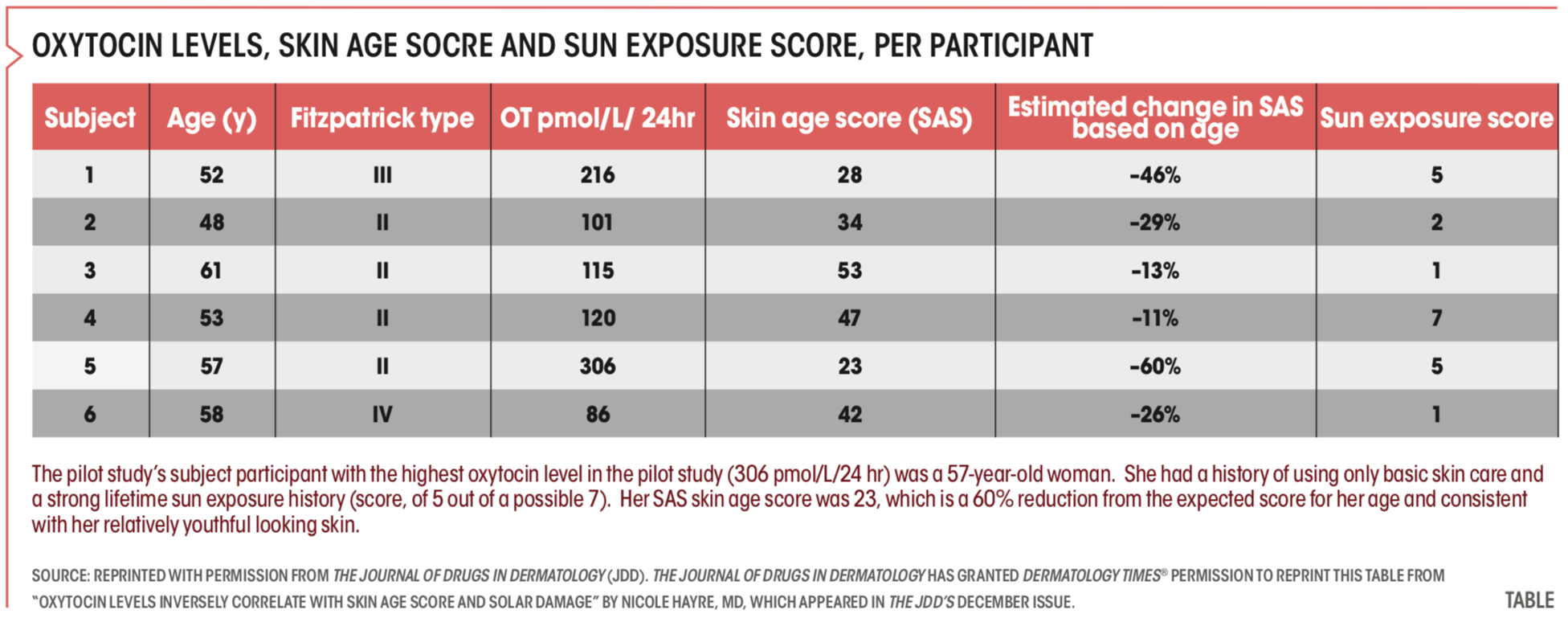
Sun exposure scores for the 6 participants ranged from 1 to 7, OT levels ranged from 86 to 306 pmol/L per 24 hours, and actual SAS scores ranged from 23 to 53. The results for estimated percent change of SAS showed that the actual score for all participants was lower (more youthful) than expected. A plot of each woman’s OT level against the percent change showed an inverse, almost linear relationship between the 2 variables—the higher the OT level, the greater the percent change in SAS (Figure).
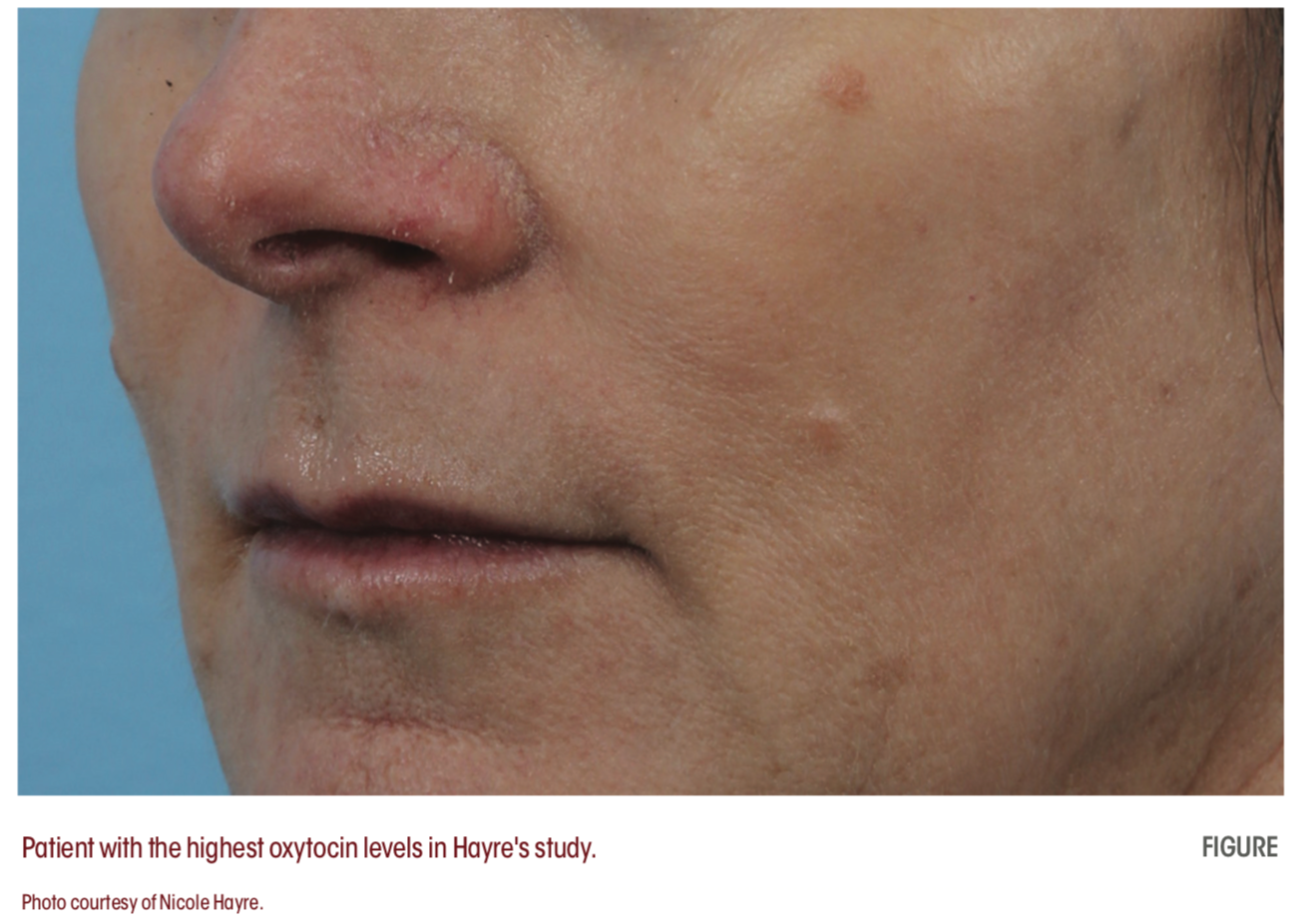
“It was interesting to find that several patients with high OT levels had SAS that correlated with more youthful skin in spite of high sun exposure scores, whereas others with lower OT levels and minimal sun exposure had higher SAS scores,” Hayre says. “This evidence connects clinical findings with previously published benchwork research showing that OT binding to receptors in fibroblasts can halt skin degradation by inhibiting SASP.”
Clinical Translation
Hayre would like to expand the pilot study and further explore the OT’s potential importance in the skin. She is now working with a pharmaceutical company to evaluate a safe, nonhormonal, botanical that appears to have an OT-like effect on the skin.
In the meantime, it may be possible to take advantage of OT’s potential benefits by encouraging certain behaviors, she said. “For skin health, dermatologists tell patients to wear sunblock, use appropriate skin care products, and avoid smoking,” Hayre said. “Perhaps our counseling should also include advice about making time for love and affection. Research shows that aside from intimacy and hugging partners, family, and friends, snuggling a pet and even caressing the skin can release OT.”
“Higher OT levels protecting the skin and making subjects appear healthier and more youthful likely promotes further social interaction. This OT Social Exchange System appears to work as a positive feedback loop which I speculated likely affects more than just the skin.” Hayre adds that this theory intrigued her to search the literature for information on other biological effects of OT. “I found preliminary research involving every system in the body and how it is positively affected by OT,” she says. “We have always known that love and affection improve mental and emotional well-being, but I am amazed that after centuries of medicine we are just learning about the importance of our social interactions on physical health.”
Intrigued by her research, Hayre searched the literature for information on other biological effects of OT. “I found preliminary research involving every system in the body and how it is affected by OT,” she says. “We have always known that love and affection improve mental and emotional well-being, but I am amazed that after centuries of medicine, we are just learning about the importance of our social interactions on physical health.”
“To me, all of this is evidence that we really do need to take time out every day from our busy modern lives to enjoy one another’s company,” adds Hayre. “It is essential to our good health.”
Disclosure:
The author reports no relevant disclosures or financial interests.
References:
1. Hayre N. Oxytocin levels inversely correlate with skin age score and solar dam- age. J Drugs Dermatol. 2020;19(12):1146-1148. doi:10.36849/JDD.2020.5063
2. Denda S, Takei K, Kumamoto J, et al. Oxytocin is expressed in epidermal keratino- cytes and released upon stimulation with adenosine 5’-[γ-thio] triphosphate in vitro. Exp Dermatol 2012; 21(7):535-537.
3. Deing V, Roggenkamp D, Kühnl J, et al. Oxytocin modulates proliferation and stress responses of human skin cells: implications for atopic dermatitis. Exp Der- matol 2013; 22(6) 399-405.
4. Lotti T, Hautmann G, Panconesi E. Neuropeptides in skin. J Am Acad Dermatol. 1995;33(3):482-496.
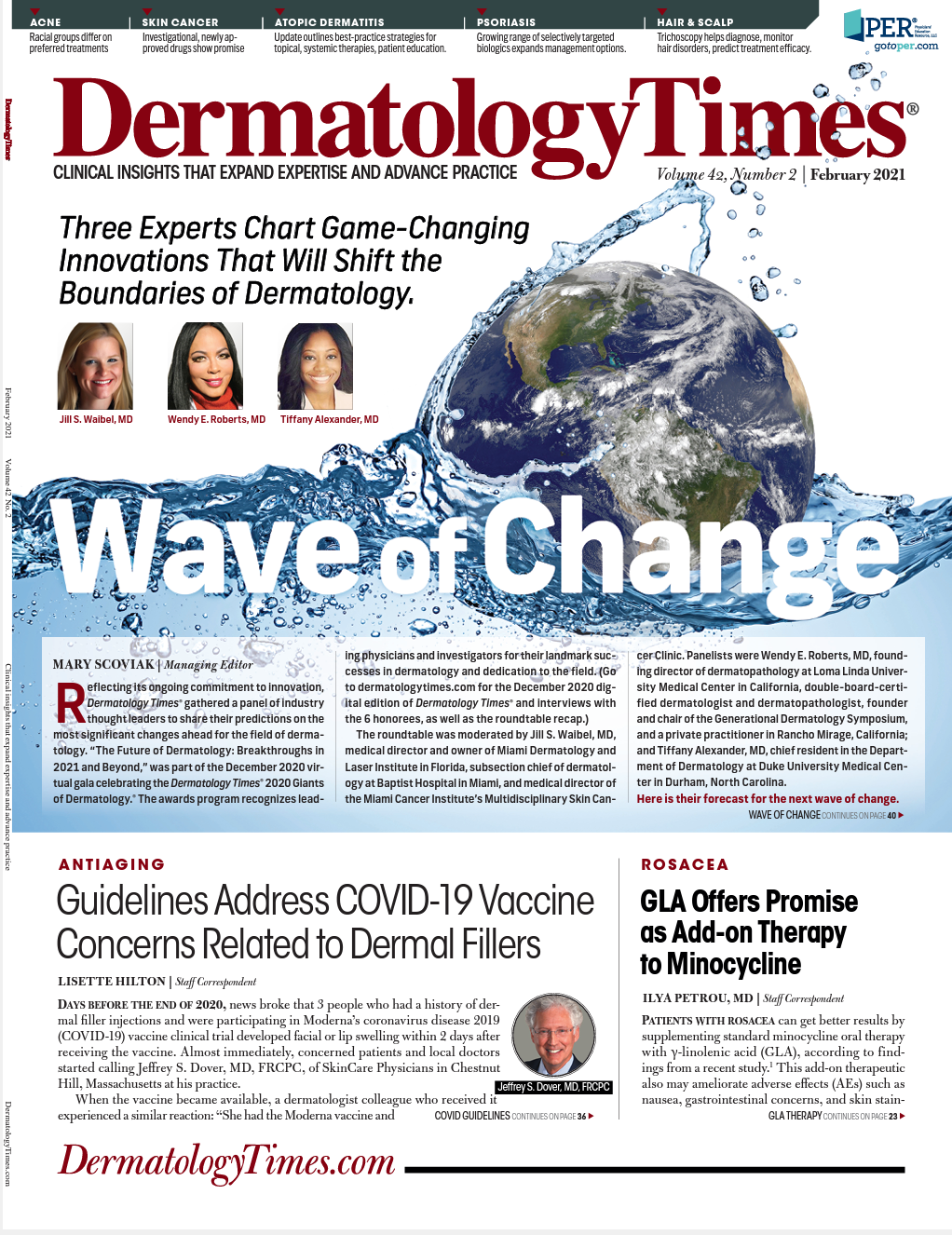
Newsletter
Like what you’re reading? Subscribe to Dermatology Times for weekly updates on therapies, innovations, and real-world practice tips.





